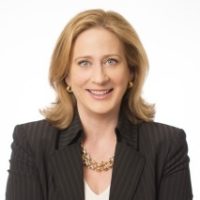
By Laura Kim and Angela M. Antonelli

Four out of five millennials are worried that Social Security will not be there for them when they are ready to retire, and half believe that Social Security will provide them with no benefits in retirement. Accordingly, 55 percent cite self-funded savings as the expected primary source of retirement income.
But how smart are millennials, the generation considered to be born between the late 1970s and the late 1990s by most demographers, when it comes to savings and investing for their retirement? There is cause for concern about these 53 million workers who make up one third of today’s U.S. workforce. Seventy-two percent agree that they do not know as much as they should about retirement investing and, among those participating in a retirement plan, a quarter admit to being unsure of how their savings are invested.
Fortunately, millennials, as the youngest members of the U.S. workforce, have the benefit of having time work for them. Compound interest shows us that when an individual starts to save is more critical than how much is saved. For example, a person saving $200 a month starting at 25 years old compared to a person saving the same amount starting at age 35 will have contributed 33 percent more by age 65 and accumulated twice as much in savings (assuming an estimated average six percent rate of return).
How can retirement savings programs help millennial workers understand the importance of retirement savings and make it more appealing for them to take advantage of retirement savings options?
Adapting to Worker Mobility by Increasing Portability
Making retirement accounts more easily portable will help enable workers to make regular and, less likely to be interrupted, contributions even as they move between employers throughout their career. Bureau of Labor Statistics (BLS) data show that younger workers are more likely to work in nontraditional job settings and more likely to switch jobs than other age groups. The median job tenure among workers age 25 to 34 (2.8 years) is less than a third that of older workers age 55 to 64 (10.1 years). Fifty-five percent of jobs held by those ages 18 to 28 lasted less than one year, and 70 percent of jobs lasted no more than two years.
In addition, an increasing number of American workers are turning to freelancing, either by choice or necessity. Studies show a more rapid growth in the employment of gig workers when compared to total employment growth between 2002 and 2014. Although all age groups take part in the gig economy, millennials make up the largest group, with a third of millennials being independent workers.
Unfortunately, our employer-based retirement system of accounts is not easily portable. The direct rollover of funds from one employer plan to another is needlessly cumbersome, so workers either roll their funds into an individual retirement account (IRA) or cash out. Too often, if the account balance is small, it is forgotten and lost by the worker. In addition, it is simply not efficient and cost-effective for workers to have to manage and maintain several different retirement accounts scattered across multiple employers and/or their own IRA accounts. Policymakers and the private sector must work together to minimize the barriers to moving funds between retirement accounts as workers move from employer to employer, and make it easier for workers to keep track of their accounts and to consolidate those accounts.
Addressing the Financial Literacy Gap with Information, Tools and Nudges
Many important financial decisions, including decisions to invest in higher education, saving for retirement, and purchasing a home, are made early in adult life. It is logical then, that improving financial capability early is key to improving the outcomes of those critical decisions. Young adults have a lower level of financial literacy compared to older adults, with less than a quarter demonstrating basic financial knowledge and only eight percent demonstrating high financial literacy.
Workers under 30 are more likely to identify as “do it for me” investors than workers over 30, expressing that they want advice from investment professionals, and indicate they would appreciate notifications such as alerts when they are not saving enough. Such tools could prove to be effective nudges, especially when 52 percent of millennials admit that they “guessed” the figure needed to save for retirement, with just 10 percent having used a retirement calculator or worksheet.
Addressing common budget constraints that young employees face such as paying off student loans, mortgages, and credit card debt, could be instrumental to helping them save for retirement. While paying off high-interest loans may take priority over contributing to a retirement plan, for example, prioritizing saving through an employer-sponsored plan and taking advantage of the employer match over paying off a low-interest school loan may maximize wealth in the long run. The 2016 National Financial Capability Study finds that a sizable proportion of millennials find it difficult to make ends meet, with 22 percent having spent more than their income. Making financial wellness sessions available to help employees address emergency issues could help workers budget their expenses and better manage unexpected costs when they arise.
Framing the Message is Important to Achieving Short- and Long-Term Goals
Behavioral psychology may shed some insight to help younger workers develop a holistic financial strategy that includes both short-term goals such as purchasing a car, and long-term goals such as saving for retirement. Because we tend to think in abstract terms for events that are further away in the future and make more detailed plans for events closer to the present, message framing can have a significant impact on savings participation rates.
A study by the Center for Retirement Research at Boston College found that young workers (between ages 18 to 34) responded strongly to an ad communicating long-term savings goals with abstract framing and non-urgent messaging (i.e., “If you haven’t done so already, you may want to consider setting up a retirement account”). This ad was associated with both a higher likelihood of intended participation in a retirement savings program and higher intended savings rate than an ad talking about long-term savings goals with concrete framing. At the same time, young employees also responded well to an ad that used concrete framing for short-term goals (i.e., “Save 15 percent from each paycheck”). By taking into consideration younger workers’ likelihood of viewing retirement as a far-off event, abstract messaging can help them to start saving while more concrete messaging can improve those savings incrementally by bringing focus to short-term goals (i.e., focusing on pay periods).
Utilizing Technology Makes Getting Started Easier
With technology now more accessible than ever, mobile financial services can play an increasing role in helping consumers to manage and control personal finances. Innovations in financial technology (also referred to as “fintech”) make investing easier through automatic contributions and low cost, simplified mobile investing platforms. Mobile platforms can make it easier for users to monitor their financial activity and transactions by making information more accessible and connecting different accounts – from bank accounts, credit cards to IRAs – in one place. Because smartphone ownership is correlated to age, younger individuals are more likely to be the first ones with access, regardless of income.
Fintech has already started to influence the way people manage their finances. Peer-to-peer ridesharing apps Uber and Lyft have partnered with Betterment and Honest Dollar, respectively, to offer drivers flexible retirement accounts. Under such arrangements, the saver can choose how much to save (either a percentage or saving only after income has passed a decided threshold), with apps sending reminder messages if deposits have not been made. Such applications give the saver the ability to choose a way of saving that best meets their income circumstances.
Conclusion
Millennials are better educated than previous generations, with a greater proportion of them possessing a college degree. They also have lived through the Great Recession, the worst economic downturn in several generations, and as a result are more risk averse and more likely to begin to save earlier in their careers. Today, the median age to begin saving for retirement is 22 (compared to 27 for Generation X and 35 for baby boomers).
The greatest success and gains in strengthening retirement security will not come from helping those who are already close to retirement age. It will come from helping the youngest workers today understand the importance of securing their long-term financial well-being. Traditional methods no longer work as well and new, innovative approaches are required. With the rise of the gig economy and contingent workforce, new thinking about education, marketing and outreach, and tools will be required to encourage young adults to start to save sooner.
Laura Kim is a Research Assistant and Angela M. Antonelli is the Executive Director of the Georgetown Center for Retirement Initiatives.
June 2017, 17-2
The Pew Charitable Trusts, “Retirement Plan Access and Participation Across Generations,” February 15, 2017.
Young Invincibles, “Financial Health of Young America,” January 2017.
Wells Fargo, “2016 Wells Fargo Millennial Study,” 2016.
